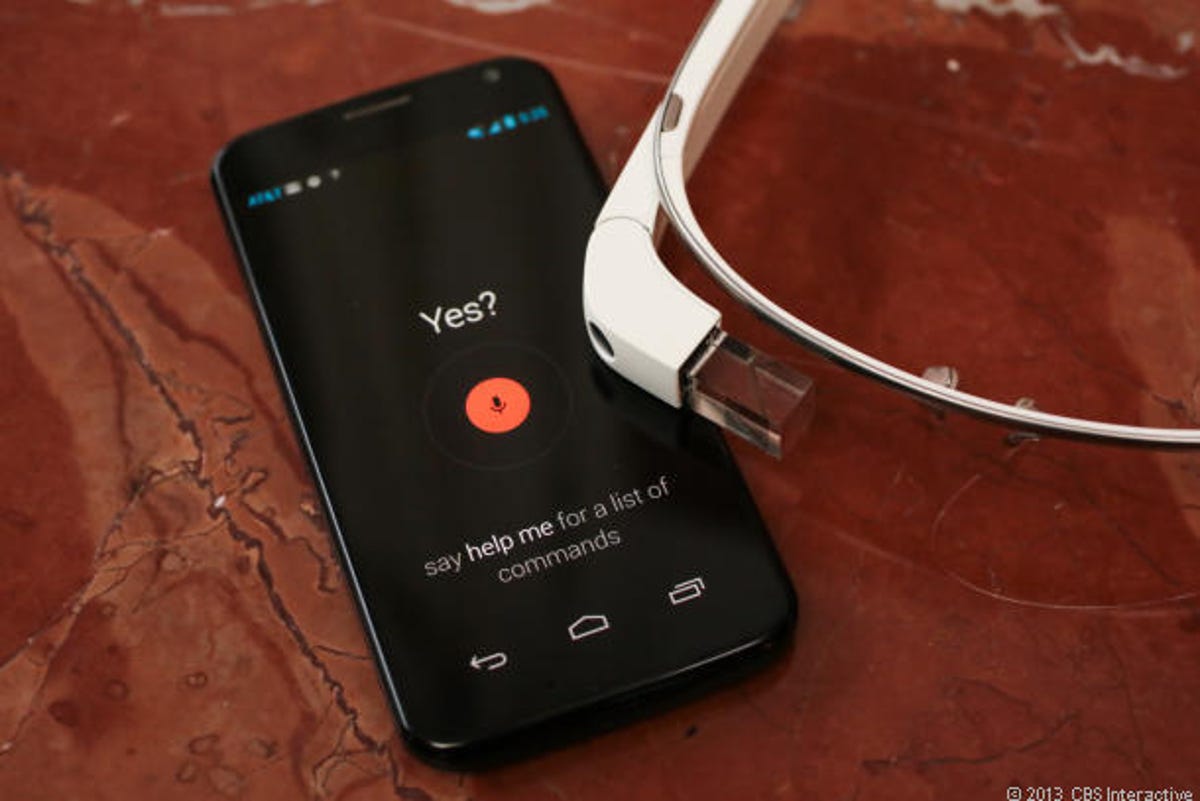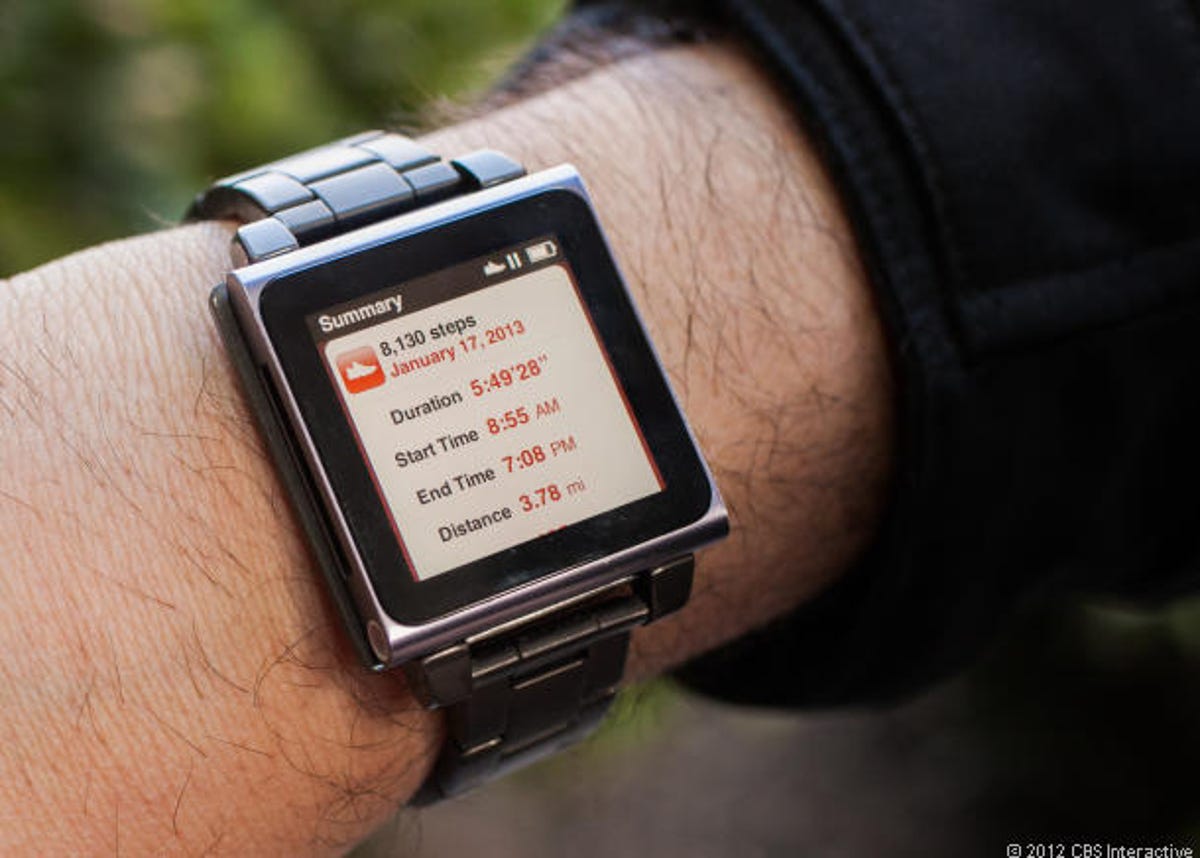There’s a flood of wearable tech arriving early 2014, and it feels unavoidable. Look around and spit, and there’s a product in the works. Samsung, Sony, LG, Huawei, Pebble, Garmin. They’re all coming sooner or later, be it by wrist or glass. January, February, March, April: most of the wearable gear we’ve seen at CES and Mobile World Congress will be here before you know it.
Wearable tech at Mobile World Congress (pictures)






So fast, so soon, so sudden: does it mean wearable tech’s great time has come? Or, does it really mean what I think it means, that everyone’s trying to get something on shelves before the biggest elephants in the room finally make their inevitable announcements…Google, and Apple?
Wearable tech of the future will hinge on Google and Apple. And for different reasons. And you can bet that all the other companies out there know this, and are accelerating the release of current wearable tech to beat them to the punch. Because both companies further outline their 2014 plans, wearable tech is bound to change again. Why? Because that’s what happened to phones, and tablets, too.
Google: the software, the services, the scope
I don’t see how Google won’t be the epicenter of wearables. Google Glass already made a splash in 2013, and yet Google still doesn’t have a wearable consumer product that anyone can buy in stores yet.
That’s due to change soon. As first reported on CNET, a Google Now-powered smartwatch, built by LG, is expected to debut at the Google I/O developer conference in late June. And that’s only bound to be the very beginning. Google’s spent over a year learning about wearable tech via the Google Glass Explorer’s program, and learning how Google’s services, including Google Now, fit into a world beyond phones, tablets, and computers.


Sarah Tew/CNET
Google Glass may not be the product most consumers end up experiencing. It could be a watch, or a band, or something else. Google Now is the product worth watching — that context-sensitive, always-on service that made the Moto X so interesting, and feels only a few steps removed from a movie like “Her.”
You also get a sense of the other shoe beginning to drop in Google’s master wearables plan with the company’s latest high-profile acquisition: Nest. It’s the beginning of a Google-in-everyday-things movement, toward smart homes and smart zones. Wearable tech won’t be of much use as an accessory for your phone alone; it needs to be better-connected to the rest of the world, too. That’s where Google seems poised to develop software, infrastructure, and new ideas that other wearable tech can employ.
Apple: the design and the utility
Apple’s making an iWatch. Or it isn’t, and we’ve all been deceived. Whatever this product ends up being — which I still think should be a successor to the iPod line and a semi-modular gadget that will clip into various bands or other accessories — it’s bound to be well-designed. Design is where Apple products tend to shine, and where most other companies seem to pay attention. Apple has technologies that could be very wearable-friendly, like Siri, Touch ID and iBeacon, but it’s design that everyone is looking to Apple to lead in.
In wearables, design is hugely important. No one really knows what wearable tech design should really look like, or feel like, to be successful. The products we’ve seen so far have been a big grab bag, even the ones that seem well-designed may end up having unforeseen problems down the road.
Apple will take a crack at it like everyone else, and odds are Apple’s ideas will influence both everyday people and the industry. After Apple’s device, will other wearable companies take their design philosophies back to the shop and come back with products that are a response to Apple’s ideas? Based on what’s happened with the MacBook, iPhone, and iPad, that answer’s bound to be yes.


Sarah Tew/CNET
Apple does another thing well, I think — it preaches everyday utility. You may not want an iPad, or an iPhone, but Apple’s marketing and its pared-down line of products focus in on specific use cases, mass appeal, and clear, understandable function. Even the iPod Nano-on-a-wrist idea from 2011 made sense…so much so that it helped launch a lot of wearable watch ideas seen now.
Watch any Kickstarter video for your average piece of emergent wearable tech and you’ll be exposed to an odd mix of sci-fi, niche quirk, and aspirational weirdness. Few of these gadgets preach everyday use that makes sense to most people. Apple may not succeed at cracking open wearable tech, but it stands the greatest chance of making the field more understandable to someone who’s not a techie. Outside of fitness bands and pedometers, what’s really stuck so far?
If an Apple wearable can raise more everyday awareness, like Google Glass did, then that’s bound to help every other wearable tech company find a way to be more relevant. And, if Apple’s device can work with other accessories, like the MFi program does for iOS gear, maybe other wearables will end up pairing up in unexpected ways. It’s not an impossible thought.
Hurry up and wait
For now, does that mean you hold off on all wearable tech till Google and Apple get here? You’d probably be missing out on some useful activity trackers (if you need one). And, there are definitely some well-made and intriguing products out there now or coming soon, like the Pebble Steel and Samsung Gear Fit. But, if I were looking to buy something for my wrist, I’d certainly wait a few months until at least June. With Apple’s Worldwide Developers Conference and Google I/O both likely to happen around then — and with the speed and volatility the landscape’s showing — it might be worth the wait.
It doesn’t mean other companies, and smaller independent companies, won’t succeed. It just means there’s a good chance that what comes next from Google and Apple will change everything after that.
Google Glass Explorer Edition



